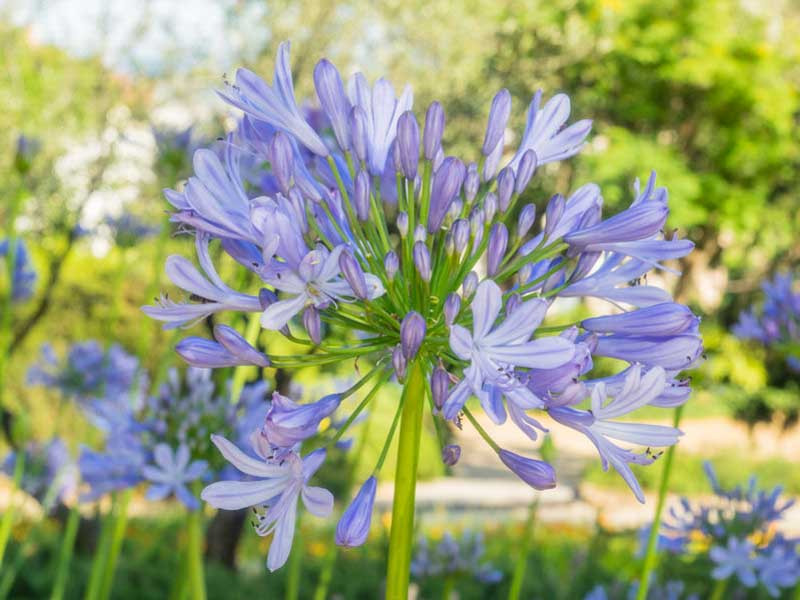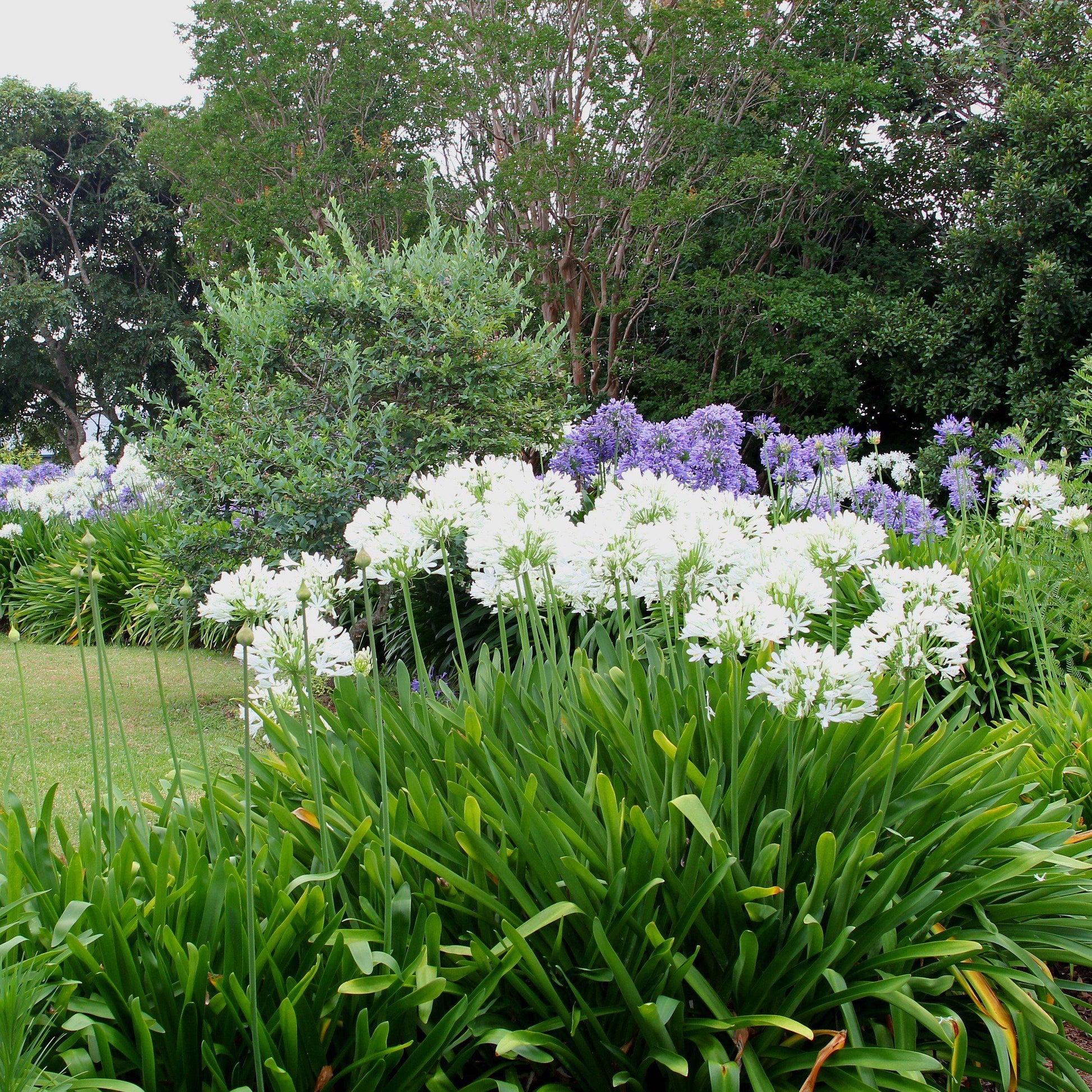Seasonal Agapanthus Care: Getting Ready For Winter Season and Summer
Seasonal Agapanthus Care: Getting Ready For Winter Season and Summer
Blog Article
Letting Loose the Secret to Successful Agapanthus Cultivation: Tips and Tricks for a Flourishing Yard
In the world of gardening, cultivating agapanthus effectively needs a tactical technique that encompasses numerous elements of plant care. With careful interest to detail, one can open the secrets to supporting these spectacular flowers, leading to a yard that flourishes with appeal and vibrancy. By understanding the subtleties of agapanthus growing, one can create an environment where these plants grow and flower abundantly. In the adhering to discussion, we will explore crucial ideas and techniques that will certainly lead you towards a growing agapanthus yard, providing insights into ideal practices, soil problems, sprinkling methods, and much more.
Planting Agapanthus: Best Practices
When growing Agapanthus, proper soil preparation is essential for making sure effective development and development of these gorgeous flowers. Agapanthus, commonly called Lily of the Nile or African lily, flourishes in well-draining dirt with a somewhat acidic to neutral pH level - Agapanthus. Prior to planting, it is crucial to change heavy clay soils with organic issue such as compost or peat moss to enhance water drainage and provide vital nutrients for the plants
To grow Agapanthus, select an area that obtains complete sunshine to partial color, as this will promote healthy development and bountiful flowering. Dig a hole twice the diameter of the plant's origin round and position the Agapanthus at the very same deepness it was previously growing. Gently backfill the hole with dirt, pushing down strongly to eliminate any type of air pockets around the roots.
Water the newly grown Agapanthus extensively and proceed to keep the soil evenly moist, particularly during the plant's active expanding period. Agapanthus. Applying a balanced fertilizer once a month can even more support the plant's development and blooming. By complying with these best techniques for planting Agapanthus, you can develop a magnificent display screen of these fascinating blossoms in your garden
Ideal Dirt Conditions for Agapanthus
For optimal development and growing success of Agapanthus plants, making certain the soil problems are optimal is essential. Agapanthus thrives in well-draining dirt with a slightly acidic to neutral pH degree ranging from 6.0 to 7.0. This kind of dirt enables for sufficient water drain, stopping waterlogging which can result in root rot. To enhance dirt drainage, take into consideration adding raw material such as garden compost or peat moss when preparing the planting website. In addition, Agapanthus likes soil that is rich in nutrients, so including a well balanced fertilizer during the expanding season can advertise healthy and balanced growth and vivid blooms.

Watering and Fertilizing Tips
To guarantee healthy growth and dynamic flowers, appropriate watering and feeding strategies are necessary for effective Agapanthus farming. Agapanthus plants benefit from normal watering, particularly throughout the expanding season. It is advised to water deeply as soon as a week, making certain the dirt is wet yet not saturated. During heat or in pots, even more constant watering may be necessary to stop the dirt from drying entirely.
When it comes to feeding Agapanthus, a balanced plant food with equivalent parts nitrogen, phosphorus, and potassium can be applied in the springtime to advertise healthy development and blooming. Slow-release fertilizers are perfect for giving nutrients gradually over an extensive duration. Prevent over-fertilizing, as this can result in too much foliage development at the expense of flowers.
Additionally, including organic matter like compost into the soil can boost nutrient levels and enhance soil structure, aiding in the general check it out wellness of the Agapanthus plants. By complying with these watering and feeding suggestions, garden enthusiasts can ensure their Agapanthus plants grow and produce stunning screens of flowers.
Pruning and Deadheading Methods
Proper pruning and deadheading techniques play an important duty in maintaining the health and wellness and visual appeals of Agapanthus plants, complementing the crucial methods of watering and feeding for effective farming. Pruning Agapanthus involves removing spent blossom heads, yellowing or dead fallen leaves, and overall shaping of the plant to promote far better growth. Deadheading, the procedure of getting rid of faded blossoms, not just enhances the plant's look however likewise urges further growing.
When deadheading Agapanthus, it is advisable to snip off the flower stem at the base utilizing sharp, tidy shears. This procedure redirects the plant's power from seed manufacturing back right into root and foliage growth, promoting a much healthier and extra robust plant. Regular deadheading can prolong the flowering duration of Agapanthus and avoid self-seeding, which can bring about overcrowding.
In terms of trimming, Agapanthus normally gain from a light trim after blossoming to clean up the plant and motivate fresh development. Reducing the invested blossom stems and eliminating any type of dead or damaged vegetation assists maintain the plant's vigor and general look. Nevertheless, it is necessary to avoid cutting right into the crown of the plant, as this can weaken its health and wellness.

Protecting Agapanthus From Vermins and Diseases
Executing efficient pest and condition monitoring methods is crucial to protecting the wellness and vigor of Agapanthus plants in farming. One common pest that impacts Agapanthus is the Agapanthus borer, a caterpillar that passages right into the plant, creating damages to Visit Your URL the blossoms and leaves.
In addition to insects, Agapanthus are at risk to diseases such as root rot and fungal fallen leave places. By staying alert and resolving pest and illness concerns without delay, gardeners can assist their Agapanthus flourish and grow.

Verdict
Finally, effective cultivation of agapanthus needs proper growing techniques, perfect dirt conditions, adequate watering and fertilizing, normal pruning and deadheading, and security from conditions and pests. By following these tricks and suggestions, garden enthusiasts can make sure a prospering garden full of attractive agapanthus flowers. Agapanthus. Remember to keep constant treatment and attention to information to promote the wellness and longevity of these stunning plants
When planting Agapanthus, proper dirt prep work is essential for making sure successful development and growth of these beautiful address blossoms.Water the freshly grown Agapanthus completely and continue to maintain the dirt evenly wet, especially during the plant's energetic expanding season.For optimum development and flowering success of Agapanthus plants, guaranteeing the soil problems are suitable is essential. When planting or hair transplanting Agapanthus, make sure the dirt is well-prepared to give the essential structure for the plants to develop themselves successfully. One usual bug that affects Agapanthus is the Agapanthus borer, a caterpillar that passages into the plant, creating damage to the leaves and blossoms.
Report this page